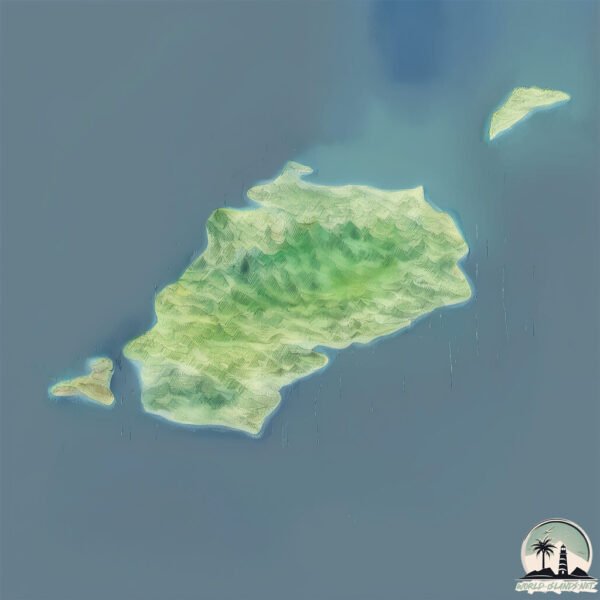Welcome to Nisí Agkístri , a Temperate island in the Aegean Sea, part of the majestic Atlantic Ocean. This guide offers a comprehensive overview of what makes Nisí Agkístri unique – from its geography and climate to its population, infrastructure, and beyond. Dive into the details:
Geography and size of Nisí Agkístri
Size: 12 km²Coastline: 17.2 kmOcean: Atlantic OceanSea: Aegean SeaContinent: Europe
Nisí Agkístri is a Medium Island spanning 12 km² with a coastline of 17 km.
Archipel: –
Tectonic Plate: Africa – One of the world’s largest tectonic plates, covering the African continent and parts of the surrounding oceans, known for its stability with some active rift zones.
The geographic heart of the island is pinpointed at these coordinates:
Climate and weather of Nisí Agkístri
Climate Zone: TemperateClimate Details: Hot-Summer Mediterranean ClimateTemperature: Hot Summer
Climate Characteristics: Characterized by hot, dry summers and mild, wet winters, typical of coastal areas with abundant sunshine.
Topography and nature of Nisí Agkístri
Timezone: UTC+02:00Timezone places: Europe/MariehamnMax. Elevation: 223 m Mean Elevation: 90 mVegetation: Evergreen Needleleaf ForestTree Coverage: 53%
The mean elevation is 90 m. The highest elevation on the island reaches approximately 223 meters above sea level. The island is characterized by Hills: Gently sloping landforms with rounded tops, having a maximum elevation between 200 and 500 meters. Hills contribute to a varied landscape on islands.
Dominating Vegetation: Evergreen Needleleaf Forest
Vegetation: 7 vegetation zones – Very Highly Diverse Island
Infrastructure and Travelling to Nisí Agkístri
Does the island have a public airport? no .
Does the island have a major port? no .
The mean population of Nisí Agkístri is 77 per km². Nisí Agkístri is Gently Populated. The island belongs to Greece .
Continuing your journey, Aegina Island is the next notable island, situated merely km away.
Αγκίστρι! Ο γύρος του νησιού - Best of Agkistri island, Greece
If you love drone video and Greece travel, make sure to subscribe to papanikolaou travel and hit the notification bell so you never ...
Αγκίστρι! Ο γύρος του νησιού - Best of Agkistri island, Greece
If you love drone video and Greece travel, make sure to subscribe to ...
If you love drone video and Greece travel, make sure to subscribe to papanikolaou travel and hit the notification bell so you never ...
Agistri island, Greece | The diamond of the Argosaronic Gulf HD
Agistri is located just 55 minutes from Piraeus, a stone's throw from ...
Agistri is located just 55 minutes from Piraeus, a stone's throw from Aegina and offers a wonderful summer vacation and relaxed ...
Agistri exotic island: top beaches and places - the Caribbean of Greece
Welcome to the island of #Agistri. A small #Caribbean paradise only a ...
Welcome to the island of #Agistri. A small #Caribbean paradise only a breath away from Athens #Greece.
Greece is classified as Developed region: nonG7: Developed economies outside of the Group of Seven, characterized by high income and advanced economic structures. The level of income is High income: OECD.
News – Latest Updates and Headlines from Nisí Agkístri
Stay informed with the most recent news and important headlines from Nisí Agkístri. Here’s a roundup of the latest developments.
Loading...
Please note: The data used here has been primarily extracted from satellite readings. Deviations from exact values may occur, particularly regarding the height of elevations and population density. Land area and coastline measurements refer to average values at mean high tide.

